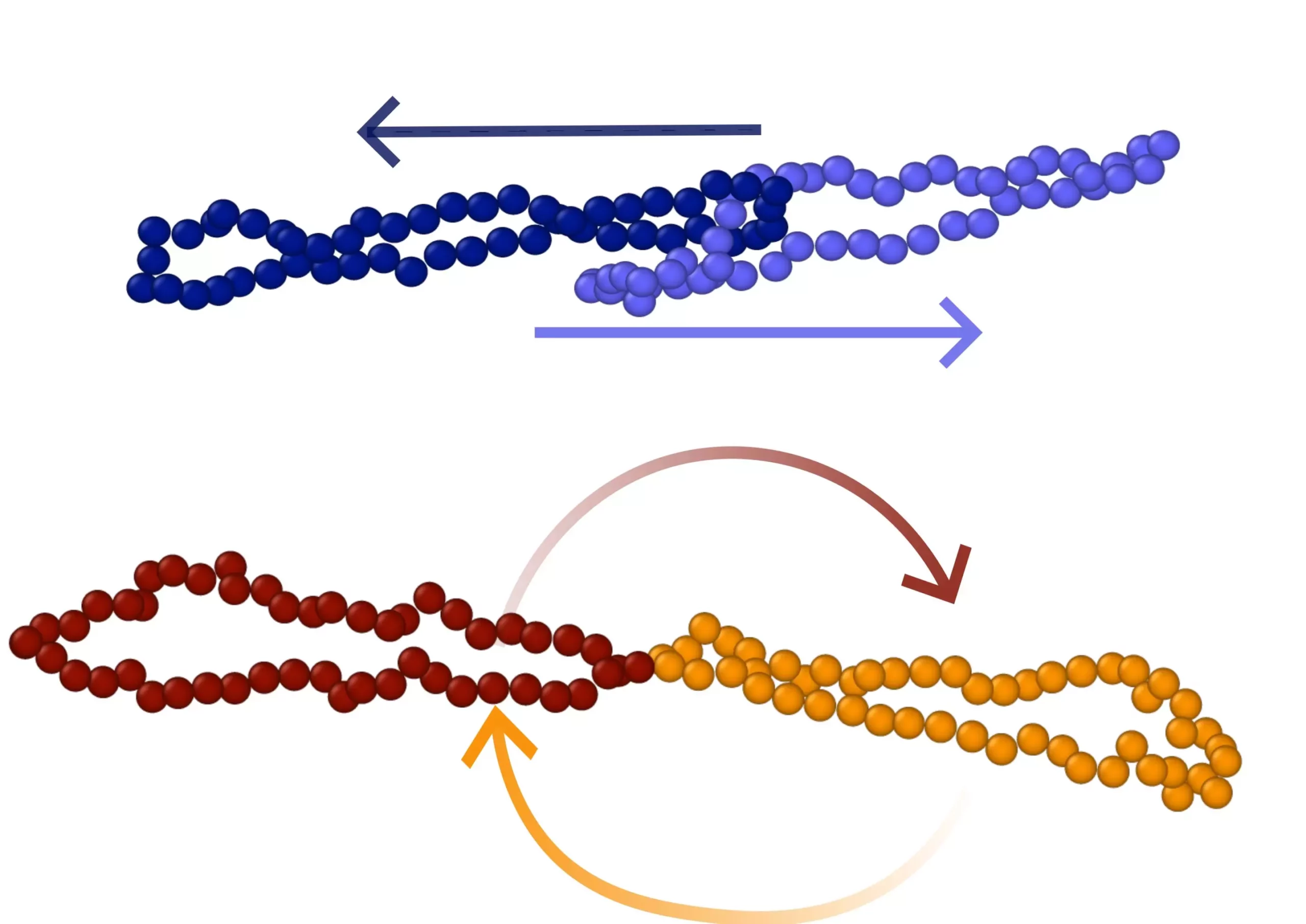The shearing of fluids, which involves the sliding of fluid layers over each other under shear forces, is a critical concept in nature and in the field of rheology. Rheology, the study of flow behavior in matter such as liquids and soft solids, looks at how shear forces induce deformation or slippage between material layers. Understanding fluid shear is essential for characterizing rheological properties like viscosity and thixotropy, which have wide-ranging applications from industry to medicine.
Recent research has delved into the study of viscoelastic fluids created by adding polymers to Newtonian fluids. A novel approach in current research involves examining polymer topology, which refers to the spatial arrangement and structure of molecules. This study focuses on the use of ring polymers, which are macromolecules with closed loops and no free ends. By conducting computer simulation experiments under shear, researchers studied two types of connected ring pairs: bonded rings (BRs) with chemical linkages and polycatenanes (PCs) with mechanical linkages via a Hopf link.
The study placed special emphasis on considering hydrodynamic interactions through simulation techniques to account for the delicate interplay between fluctuating hydrodynamics and topology. Surprisingly, the response of BRs and PCs under shear proved to be very different from each other and from other polymer types like linear, star, or branched polymers. The dynamic patterns observed in ring polymers, known as gradient-tumbling and slip-tumbling, were completely unexpected. BRs exhibited continuous gradient-tumbling motion under shear, while PCs maintained a fixed, stretched, and non-tumbling conformation due to their mechanical linkage.
The unique modes of motion observed in ring polymers have significant implications for the mechanical properties of the solution. BRs release internal stresses by tumbling, whereas PCs store stresses permanently, resulting in higher viscosity. This difference in behavior suggests that the tumbling motions and structures of PCs and BRs could influence the shear viscosity of highly concentrated solutions or polymer melts. Further experimental and theoretical studies are necessary to evaluate this hypothesis.
The interplay between hydrodynamics and polymer architecture in ring polymers has revealed unexpected dynamic patterns with implications for mechanical properties and shear viscosity. The study highlights the importance of considering polymer topology in understanding fluid shear behavior. Collaboration between research institutions has provided valuable insights into the field of rheology, but further studies are needed to explore the full extent of these findings.


Leave a Reply